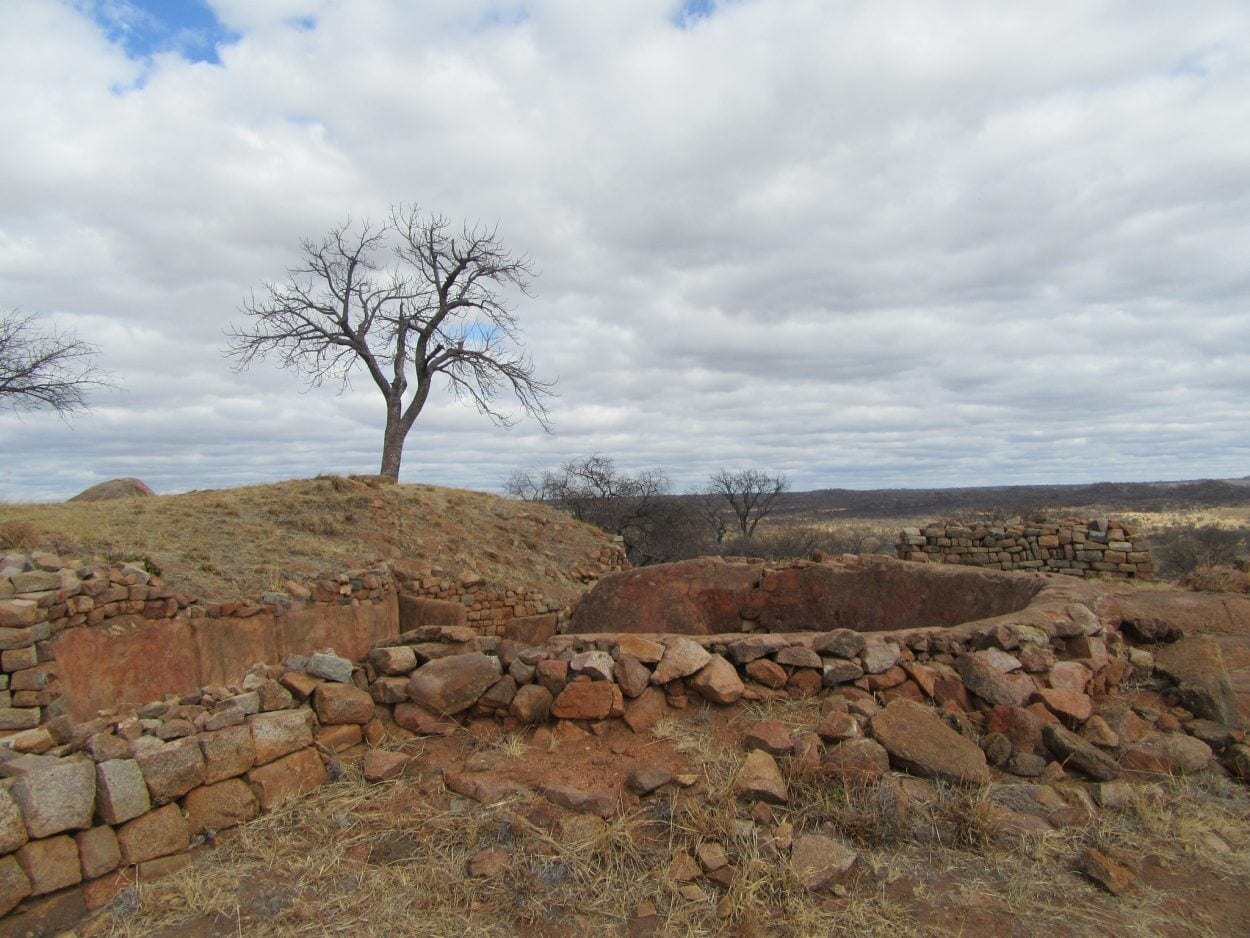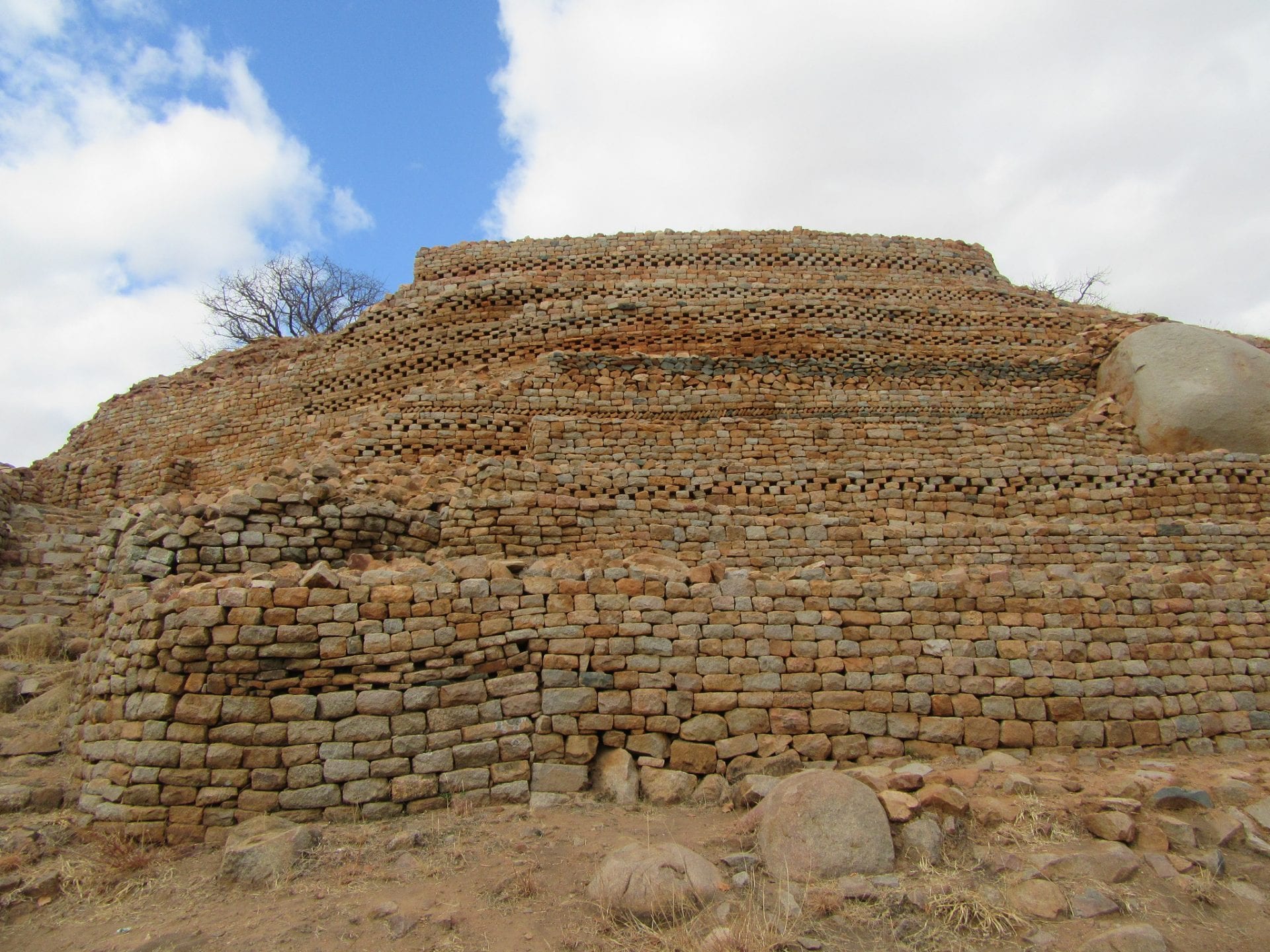Khami is an archaeological site and former capital of the Kalanga Kingdom of Butua near Bulawayo, Zimbabwe.
The Kingdom of Butua emerged after the collapse of Great Zimbabwe in the mid-16th century into a Tolwa state around AD 1640. The Kingdom was ruled by the Tolwa dynasty, who’s prosperity came from trading gold and cattle with Arab and Portuguese traders.
Khami was built on a granite hilltop, west of the Khami River on a complex series of circular and terraced platforms rising to a height between 2-7 metres. The overall complex features seven built-up areas that were occupied by the Tolwa rulers, with open areas in the valley beneath for their subjects who lived in dhaka (clay) structures surrounded by a series of granite walls. The overall site covered an area of 266 acres, making Khami one of the largest urban cities in all of Africa at the time.

The development of Khami architecture was based on a modified style of drystone walls, most distinctly seen in a check and cord style retaining wall that is 6m in height and runs in length for 68 metres. Archaeologists have suggested this style was inherited from construction techniques used at Great Zimbabwe and adapted.
The archaeological remains show a trading connection that spanned all of Eurasia, with artefacts such as 15th and 17th-century Spanish porcelain, Ming porcelain and Rhineland stoneware. Local artefacts also found includes ritual drinking pots, iron and bronze weapons, copper objects and ivory divining pieces.

The wealth of the Torwa state was envied by the Rozwi, a powerful collection of Shona states that was led by Changamire Dombo, and his son Kambgun Dombo. They invaded Khami around AD 1683 AD and established their own Rozvi Empire bringing most of present-day Zimbabwe under their control, centred on Dhlodhlo (Danan’ombe).
In 1937, Khami was proclaimed a National Monument in recognition of its importance in the prehistory of the country. Since then, the site was acknowledged as universally outstanding, leading to its proclamation as a World Heritage Site in 1986.
Header Image Credit : Amanda – CC BY-ND 2.0





